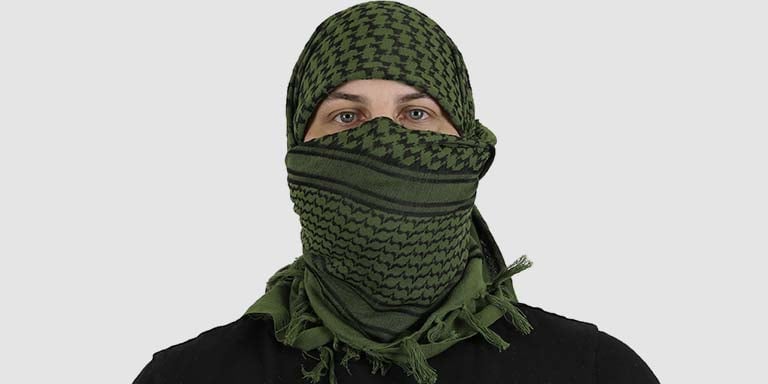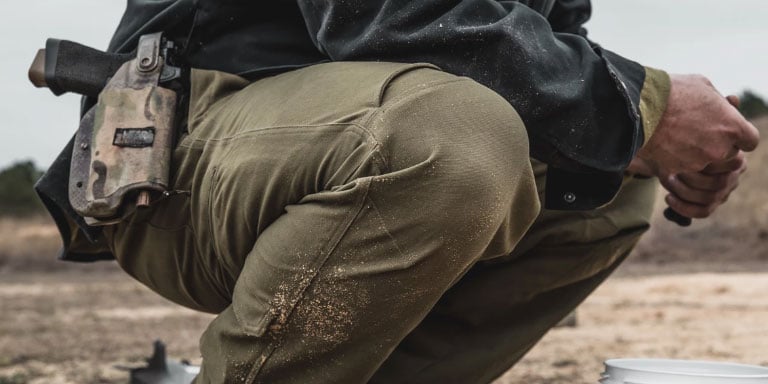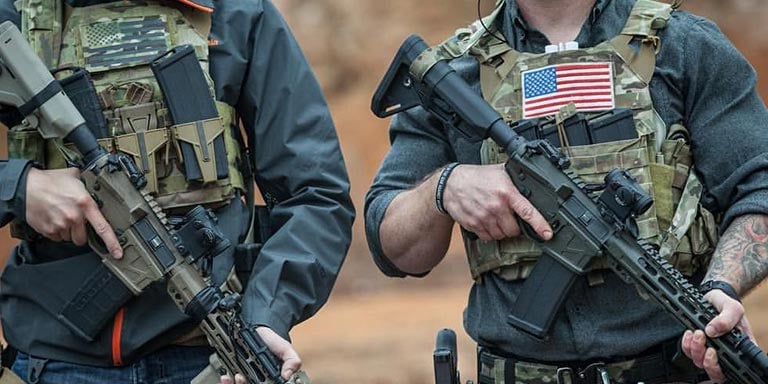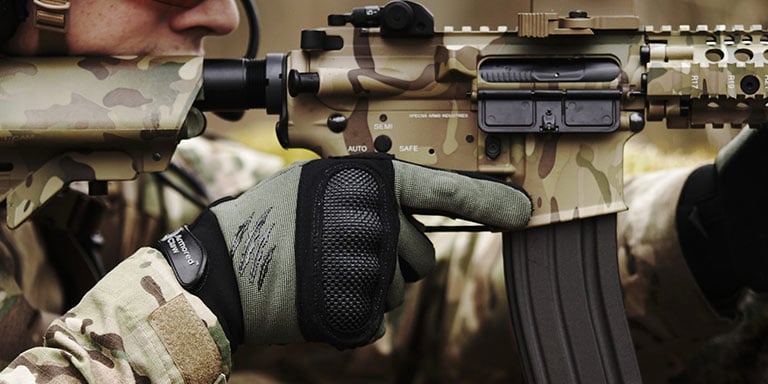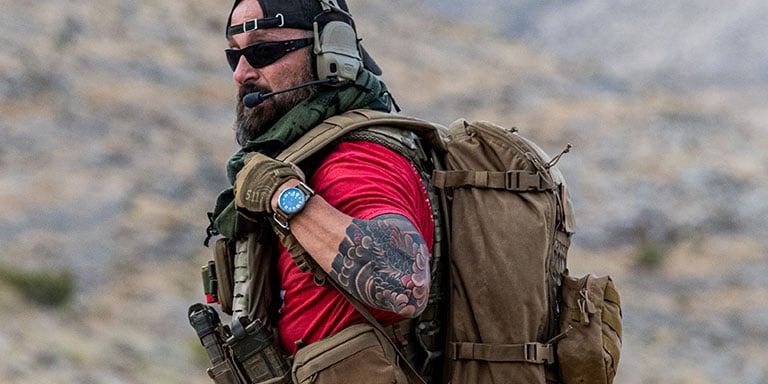
A tactical watch can do much more than simply tell time. Built from the toughest materials with dozens of advanced functions and features, these watches are designed to provide vital data and withstand the harshest conditions. To find the right tactical watch, you'll need to decide which of these features and materials are best suited for the kind of activity you expect your watch to encounter.
Time Keeping Functions

Like any watch, a tactical watch will be able to tell you what time of day it is. But time keeping functions go well beyond the standard noon to midnight configuration. From months to milliseconds, tactical watches offer a wide variety of precise time measurements.
Stopwatch
Whether you're using it to estimate the amount of distance you've traveled or to synchronize your operations with other members of your unit, a stopwatch is an excellent tool for precisely measuring elapsed time. Virtually every tactical watch comes equipped with a stopwatch.
Countdown Timer
Similar to a stopwatch, a countdown timer is a great tool for group coordination. A countdown timer counts backwards from a manually input length of time and will buzz or beep to indicate when the allotted time has elapsed. Countdown timers are an excellent way to set reminders or limit the amount of time spent on various tasks.
Calendar / Date Display
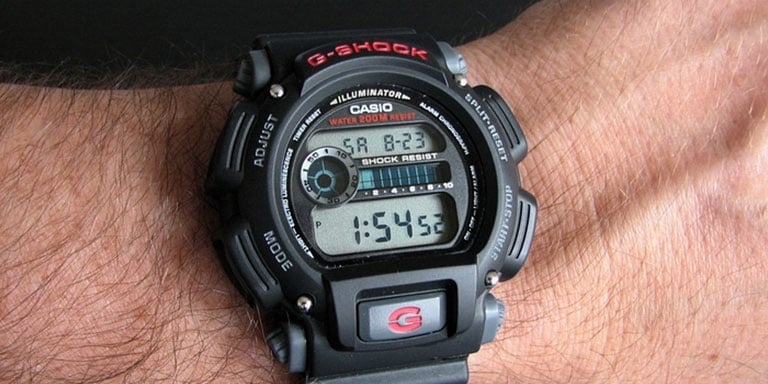
Many tactical watches come equipped with a calendar and a spot to display the current day. This allows users to keep track of time on a larger scale rather than by smaller increments like seconds or minutes. If you become lost in the woods or separated from your unit, these day and month indicators will help you to be mindful of the current date.
Alarms
Tactical watches allow you to set alarms as reminders of when to wake up, when to go to bed, when to eat or when to exercise. Military members in particular keep a tight, regulated schedule from which they shouldn't stray. Setting a few alarms throughout the day makes keeping to that schedule much easier.
Military Time
Military members don't keep track of time with a.m. (before noon) and p.m. (after noon), but in twenty-four hour increments. Tactical watches come with the option of using the typical pre and post noon function or using twenty-four hour military time.
Time Zones
For outdoorsmen exploring different parts of the country or military members deploying to other parts of the world, changing time zones means adjusting your watch manually. If you have a tactical watch, however, you won't need to change it; many tactical watches automatically adjust their display to account for a change in time zones. Some watches recognize and adjust for up to thirty-five different time zones around the world.
Advanced Functions

A typical mechanical watch bears an hour hand, a minute hand, a second hand and can account for time on a twenty-four hour basis. Tactical watches, however, come equipped with an array of advanced features and functions that can provide vital data in emergency and combat situations.
Compass
A compass can offer vital orientation in the event that you become lost in an unfamiliar place. Some tactical watches come with a digital compass that delivers ultra-precise direction while others are built with a rotating bezel around the watch face that indicates the cardinal directions.
Altimeter
An altimeter determines your height or depth in meters. This feature is especially useful for airmen and mountain climbers. An altimeter is also useful in conjunction with a topographical map to help pinpoint your location with greater accuracy.
Tachymeter
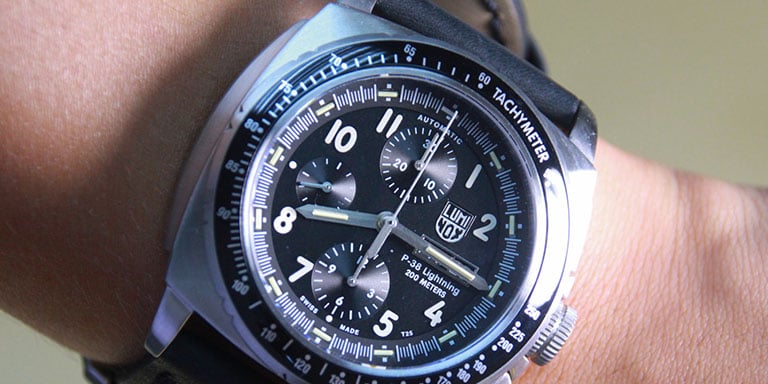
A tachymeter is a tool on a tactical watch used for finding speed as a function of time and distance. Using the tachymeter markings on the bezel and the position of the second hand from one point on the bezel to another, you can determine your speed or the speed of a passing object. Conversely, you can also use elapsed time and known speed to find the distance traveled by yourself or another object.
Barometer
A barometer measures the changes in air pressure to help predict short term weather changes. A decrease in air pressure indicates that bad weather conditions are likely to occur, while an increase signals good weather. With this information, appropriate preparations can be made for the conditions you will face.
Thermometer
Some tactical watches come equipped with a thermometer to help you monitor sudden changes in temperature. These readings can help you to understand the temperature rating of your gear; if your sleeping bag claims to work at 20° fahrenheit but you're cold in it at 40°, the thermometer on your watch may be telling you it's time for a different sleeping bag.
Moon Data
Advanced tactical watches have the ability to indicate tidal conditions based on lunar data. The moon directly affects tidal conditions on earth. Knowing the position of the moon can help you to know when the tide is coming in or receding, thereby helping you to navigate coastlines more easily.
Features

Tactical watches are designed to perform in harsh environments. They need to be able to withstand impacts, scratches, water and a number of other hazards while still delivering accurate information. Luckily, these watches are built with several features to ensure that they'll keep performing, no matter what they encounter.
Shock Resistance
Tough impacts on your tactical watch are inevitable. Whether you drop it, knock it into something while you're wearing it or drop something on it, a tactical watch is designed to absorb these blows and continue to function normally. This comes in handy in combat or when you're exploring the outdoors.
Magnet Resistance
Mechanical watches made from metal parts can quickly go awry when exposed to a magnetic field. Even tactical watches that are normally digital can experience a lag in performance when they come into contact with a magnet. To counteract this, many tactical watches are magnetic-resistant: they continue to function normally when exposed to a strong magnetic field.
Scratch Resistance
All of the information your tactical watch can convey is presented on its display. One badly placed scratch can prevent you from seeing the time, the date or other readings. As a result, tactical watches are built to resist scratches so they can cleanly and clearly display important information on the watch face.
Water Resistance
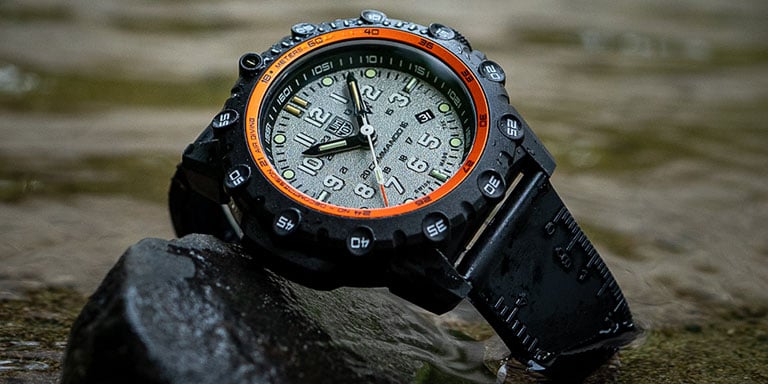
There's always a chance your watch will come into contact with water. Navy SEALs and deep sea divers specifically need watches that can continue to work after taking on water. Tactical watches are often designed to be water-resistant. Some can even continue functioning after being submerged up 200 meters.
Solar Power
The battery life of a tactical watch can last anywhere from two to seven years depending on the durability of the battery used in the watch. Solar powered watches offer even further longevity. They use the sun's rays as their source of power and, barring any other internal failures, can run indefinitely. In addition to providing peace of mind, this can be critical in certain long term scenarios.
Radio Controlled Clock
In time keeping, accuracy is of the utmost importance. Atomic clocks use microscopic frequencies to keep accurate time within nanoseconds. Packing this technology into a wristwatch is not feasible, but there is a workaround: many tactical watches use radio frequencies to reference an atomic clock to keep time accurately. The watch sends out these radio frequencies a few times a day to ensure it is still keeping time correctly based on the atomic clock with which it's communicating.
Low Light Use
The hands and number markings on a typical wrist watch can be difficult to see in the dark. Military members and outdoor explorers still need to know the time at night, however. As a result, many tactical watches are built with a backlight for high visibility when it's dark out. Other models come equipped with luminous hands and number markings for the same purpose.
Materials

To be able to take on the harsh conditions of combat and outdoor excursions, tactical watches need to be made from the toughest materials. These materials can survive impacts, resist water, resist scratches and much more while ensuring the watch continues to function as intended. Different components of a tactical watch are made from different, high-end materials that come together to make a sturdy watch that can take on anything.
Casing
The casing of a tactical watch is the portion that houses the display. It contains all of the working parts that allow the watch to display information, so it needs to be made from especially rugged and durable materials.
Carbon
A carbon-reinforced housing is tough and lightweight. This allows the wearer to move their arm and wrist comfortably without much added weight while still providing the heavy-duty durability needed to ensure the watch functions well.
Stainless Steel
Stainless steel is a heavier material than carbon. While this may result in more weight and less maneuverability, stainless steel watch casings make up for that with higher protective capabilities. A tactical watch with a stainless steel casing can take on impact after impact without affecting the integrity of the watch.
Crystal
The crystal is the transparent piece of the watch through which the display information is read. There are many materials from which a watch crystal might be crafted, but two stand out for use in tactical watches.
Mineral Glass
Mineral glass is a hard, durable material. It resists scratches and can handle impacts without cracking or shattering. It is a much better choice than acrylic or plastic and is designed to face the kind of rigors a tactical watch is bound to encounter.
Sapphire
Sapphire is one of the hardest materials a watch face is made of, second only to diamond. This hardness ensures that a sapphire watch face won't scratch, crack or shatter, even when taking on brutal impacts. A sapphire crystal is the optimal choice for a tactical watch.
Strap
The strap is the portion of the watch that wraps around the wrist and locks in place, allowing the user to wear the watch. It is usually secured with a strap or buckle. Many luxury watch straps are made from leather, but that is not a good option for a tactical watch as leather will wear over time and succumb to water damage. Instead, tactical watch straps are usually made from the following materials.
Rubber
Resistant to water, flexible and lightweight, rubber is a prime material for a tactical watch strap. It is an excellent insulator, conducting heat and cold to ensure the wearer remains comfortable. On top of that, it is very durable, refusing to break under pressure.
Silicone
Silicone is another good choice of tactical watch strap material. Like rubber, it is flexible, durable and lightweight. Like rubber, it is very thermally stable, ensuring it won't get too hot or too cold on the wearer's wrist. It also takes no damage from water and is useful in virtually any environment.
Polyurethane (PU)
Polyurethane is used in a range of other tactical gear from clothing to footwear. Its remarkable versatility and durability make it the perfect choice for, among other things, tactical wrist watch straps. The strap on a tactical watch could be made of a blend of rubber, silicone and/or polyurethane as well.
Finding the right tactical watch is not an easy task. There are a variety of features, functions and materials these watches offer. The key in selecting the right one lies in identifying the sort of activity you expect to do while wearing your watch and finding a watch to fit those needs. Becoming knowledgeable about the range of features these watches have to offer should get you well on your way on choosing the perfect tactical watch to fit your needs.
Did you find this article helpful?


